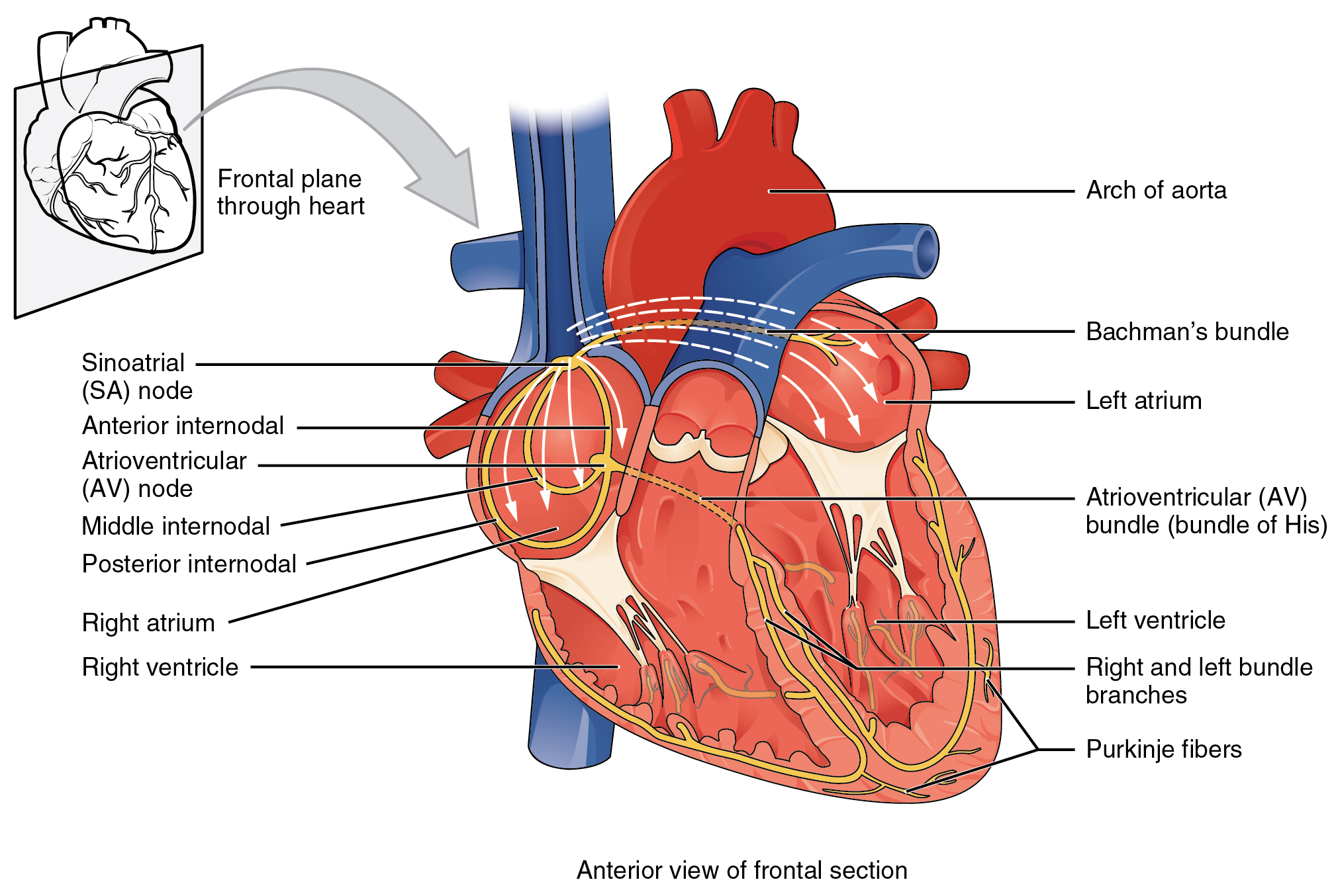| << Chapter < Page | Chapter >> Page > |
If embryonic heart cells are separated into a Petri dish and kept alive, each is capable of generating its own electrical impulse followed by contraction. When two independently beating embryonic cardiac muscle cells are placed together, the cell with the higher inherent rate sets the pace, and the impulse spreads from the faster to the slower cell to trigger a contraction. As more cells are joined together, the fastest cell continues to assume control of the rate. A fully developed adult heart maintains the capability of generating its own electrical impulse, triggered by the fastest cells, as part of the cardiac conduction system. The components of the cardiac conduction system include the sinoatrial (SA) node, the atrioventricular (AV) node, the atrioventricular bundle, the atrioventricular bundle branches, and the Purkinje fibers ( [link] ).

Normal cardiac rhythm is established by the sinoatrial (SA) node , a specialized clump of myocardial conducting cells located in the superior and posterior walls of the right atrium in close proximity to the opening of the superior vena cava. The SA node is known as the pacemaker of the heart. It initiates the sinus rhythm , or normal electrical pattern followed by contraction of the heart.
This impulse spreads from its initiation in the SA node throughout the atria to the atrioventricular (AV) node. The impulse takes approximately 50 ms (milliseconds) to travel between these two nodes. The connective tissue of the cardiac skeleton prevents the impulse from spreading into the myocardial cells in the ventricles except at the atrioventricular node. [link] illustrates the initiation of the impulse in the SA node that then spreads the impulse throughout the atria to the atrioventricular node.

The atrioventricular (AV) node is a second clump of specialized conductive cells, located in the lower portion of the right atrium within the atrioventricular wall. There is a critical pause before the AV node initiates an impulse and transmits it to the atrioventricular bundle (see [link] , step 3).
Arising from the AV node, the atrioventricular bundle , proceeds through the septum before dividing into two atrioventricular bundle branches , commonly called the left and right bundle branches. The left bundle branch supplies the left ventricle, and the right bundle branch the right ventricle. Both bundle branches descend and reach the apex of the heart where they connect with the Purkinje fibers (see [link] , step 4).

Notification Switch
Would you like to follow the 'Human biology' conversation and receive update notifications?